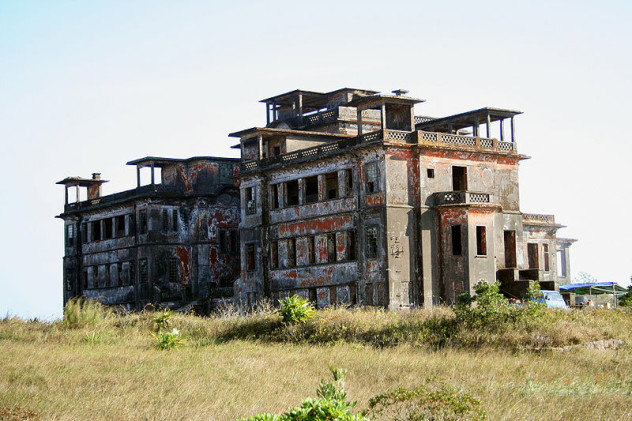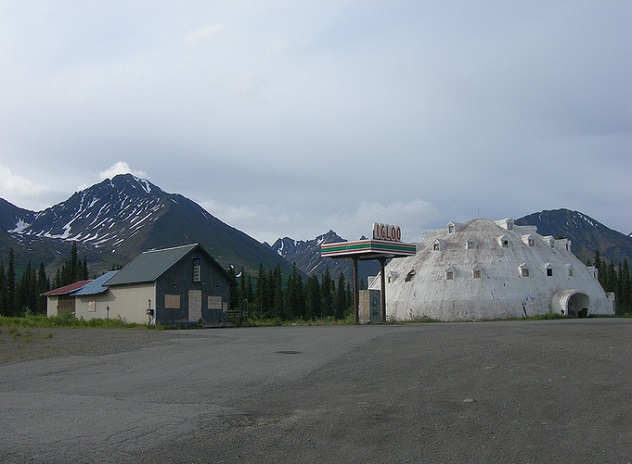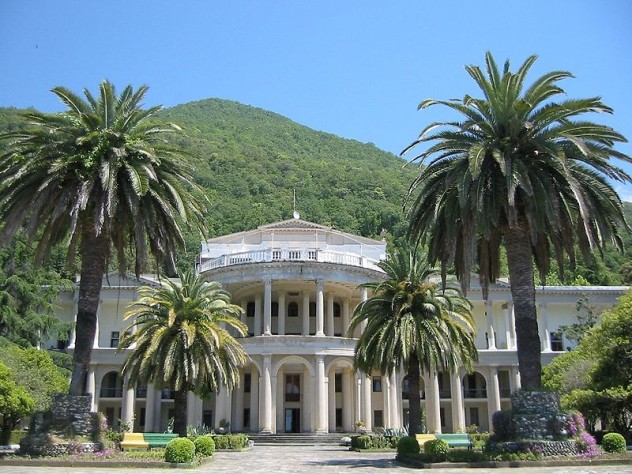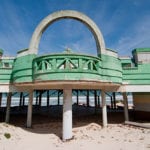 Crime
Crime  Crime
Crime  Technology
Technology 10 Hilariously Over-Engineered Solutions to Simple Problems
 Miscellaneous
Miscellaneous 10 Ironic News Stories Straight out of an Alanis Morissette Song
 Politics
Politics 10 Lesser-Known Far-Right Groups of the 21st Century
 History
History Ten Revealing Facts about Daily Domestic Life in the Old West
 Weird Stuff
Weird Stuff 10 Everyday Products Surprisingly Made by Inmates
 Movies and TV
Movies and TV 10 Actors Dragged out of Retirement for One Key Role
 Creepy
Creepy 10 Lesser-Known Shapeshifter Legends from Around the World
 Animals
Animals 10 Amazing Animal Tales from the Ancient World
 Gaming
Gaming 10 Game Characters Everyone Hated Playing
 Crime
Crime 10 Terrifying Serial Killers from Centuries Ago
 Technology
Technology 10 Hilariously Over-Engineered Solutions to Simple Problems
 Miscellaneous
Miscellaneous 10 Ironic News Stories Straight out of an Alanis Morissette Song
Who's Behind Listverse?

Jamie Frater
Head Editor
Jamie founded Listverse due to an insatiable desire to share fascinating, obscure, and bizarre facts. He has been a guest speaker on numerous national radio and television stations and is a five time published author.
More About Us Politics
Politics 10 Lesser-Known Far-Right Groups of the 21st Century
 History
History Ten Revealing Facts about Daily Domestic Life in the Old West
 Weird Stuff
Weird Stuff 10 Everyday Products Surprisingly Made by Inmates
 Movies and TV
Movies and TV 10 Actors Dragged out of Retirement for One Key Role
 Creepy
Creepy 10 Lesser-Known Shapeshifter Legends from Around the World
 Animals
Animals 10 Amazing Animal Tales from the Ancient World
 Gaming
Gaming 10 Game Characters Everyone Hated Playing
10 Terrifyingly Creepy Abandoned Hotels
By their very nature, hotels are designed to teem with life, such as men on business trips, honeymooning couples, and tourist families with gaggles of sticky-faced children. Hotels should appear warm and welcoming, their employees indulgent to your every need. But when business dips and owners can no longer afford to keep the doors open, the building’s inviting atmosphere dissipates. Lobbies once choked with people become yawning and shadowy. Wandering down hallways with darkened rooms flanking either side becomes an exercise in courage. In these places, the mind plays tricks, inventing footfalls, laughter, and snippets of music from a bygone age—or perhaps some guests really do never leave.
10 Bokor Palace Hotel And Casino

Bokor Hill Station was a Cambodian resort town built in the early 1920s by colonial French settlers, the crown jewel of which was the beautiful Bokor Palace Hotel and Casino. Construction in the remote mountains was difficult and around 1,000 lives were lost in the process.
The area flourished for two decades as an oasis in the squalid heat and clutter of Phnom Penh, but Europeans fled the area in the late 1940s when the Vietnam conflict ramped up. Bokor Palace was used intermittently over the years, but constant military and political instability—including invasions by Vietnam and mass killings by the Khmer Rouge—ensured the area was all but abandoned by the early ’90s.
Bokor Hill Station is now a popular tourist attraction, sitting on national park land. Although not even 100 years old, the hotel looks like a moss-cloaked ancient ruin. According to locals, the Palace teems with the spirits of those who gave their lives to build it. A park ranger named Vichat explained that he wouldn’t enter the building at night, saying “Every time we walk past, we can hear the dead walk in there. It’s full of ghosts.” Several movies have capitalized on the hotel’s creepy atmosphere, including Korean horror film R-Point and Matt Dillon’s forgettable crime drama City of Ghosts.
9 Igloo City

Easily the most bizarre-looking building on the list, Alaska’s Igloo City could just as easily be some kind of Cold War military installation as a hotel. The four-story concrete structure is built to resemble an igloo. Construction began in the 1970s, but the structure never came close to meeting building codes.
It is difficult to imagine why anyone would build such a structure in one of the most remote areas of Alaska, which would rely solely on the traffic of summer tourists. Over the years, the building changed ownership various times to be used as a souvenir stand or a roadside attraction, but it never did draw much revenue. In 2005, the last attempt to resurrect the property went by the wayside due to expense.
Today, it has been reported that the doors are no longer padlocked, but exploring this ruin might be an ill-advised venture. Vandals have largely destroyed the interior and, of course, you run the risk of encountering some of the fearsome Alaskan wildlife taking shelter within.
8 Japanese Love Hotels
Real estate is so obscenely expensive in Japan, it’s not uncommon for people to cram themselves into apartments no bigger than a walk-in closet. Others even live in “capsule homes,” which offer spaces around the size of a coffin. It’s surprising, then, that the country boasts thousands of abandoned sites for exploration, called “haikyo.” These include post–World War II ruins, cast-offs from the 1980s real estate bubble, and properties abandoned after the devastating 2011 Tohoku earthquake and tsunami.
Hotels are obviously no exception. Some of the creepiest are former “love hotels,” places where a couple can steal away for a few hours to indulge in pleasures of the flesh. Like many aspects of Japanese society that are anathema to Westerners, these rooms are often decorated with bizarre themes, like a doctor’s office, a classroom, or the inside of a spaceship. Those that have been abandoned are particularly creepy. Along with exhibiting all the decay common to any other hotel, their lurid, kitschy themes make these places appear like haunted carnival fun houses. Wandering through their halls, it is not difficult to feel the bleakness of the prostitution, disease, and drug use that went on in these rooms.
7 Ducor Palace Hotel
Owned by the Intercontinental Hotels chain, Liberia’s Ducor Palace Hotel was a beautiful five-star property in its heyday. It was one of the most luxurious accommodations in all of Africa. Unfortunately, by the 1980s, Liberia was in a bad way, ravaged by civil war and political instability. Intercontinental pulled the plug on the Ducor Palace in 1989, right before the government was again overthrown and the president cannibalized.
The hotel fell to ruin and became a haven for homeless squatters. In 2007, Liberian officials evicted the squatters with the hope of renovating the property, a project that was spearheaded by Muammar Gaddafi’s Libyan government. Unfortunately, Libya also descended into civil war and Gaddafi was killed by a crowd, so the Ducor Palace continues to decline. The darkened hallways are choked with garbage and there is no running water. Railings have been torn from the stairs and walking around the property is quite literally taking your life in your own hands.
6 Lee Plaza
Much of the city of Detroit is a dystopian wasteland of abandoned structures. According to the White House Blight Task Force, some 80,000 buildings sit empty in the city. One of the most magnificent and eerie is the Lee Plaza, a 15-story art deco behemoth built in 1929. This residential hotel was a marvel for its time, designed so that tenants never had to leave. The Lee contained a library, a daycare, a beauty parlor, a grocer, and even a netted driving range, among other amenities. The lobby was exquisitely appointed with fine woods, marble, and beautiful frescoes.
As the fortunes of the Motor City waned, so did those of Lee Plaza. The property was too exorbitant for its own good and frequently switched hands during its history. In the late 1960s, it became a home for low-income senior citizens, but problems continued to plague the building, including the murder of one of its elderly residents. It was finally closed in 1997.
The exterior entrances and ground floor windows have been bricked up and the panes of the upper windows have all been removed, leaving the brutal Michigan winds to howl through the structure throughout the year. Vandals soon made their way inside and the ornate lobby area and ballroom have been thoroughly demolished, featuring an overturned piano, cracked marble, and derelict 1970s-era furniture. Someone even managed to strip the copper from the roof. Lee Plaza seems to be an ideal candidate for razing to the ground, but it is actually on the National Register of Historic Places.
5 El Hotel del Salto
The Hotel del Salto was built during the roaring ’20s on a cliffside overlooking the beautiful Tequendama Falls of Colombia. The Gothic French mansion was built as the residence of architect Carlos Arturo Tapias but was soon repurposed as a hotel. Despite its beauty, its location dangling over a precipice made it a prime location for people to commit suicide.
The hotel was open for decades, but increasing pollution in the adjoining Bogota River forced it to close in the 1990s. The hotel sat idle for over 20 years shrouded in mist as rumors swirling that those who plunged from its rails still roamed the halls. In 2012, the property was reopened as the Tequendama Falls Museum of Biodiversity and Culture. Whether the spirits of those who took their own lives continue to roam amongst the exhibits remains to be seen.
4 Diplomat Hotel
Most people around the world flock to tropical locales like the Caribbean to spend their vacations. However, in much of the Philippines, it is so oppressively hot that vacations are often spent in Baguio City, an area known for its cool summers. Baguio is home to many hotels, but few possess as sinister a pedigree as the Diplomat.
Originally built as a seminary and vacation house by the Dominican Order of the Catholic Church, the property allegedly harbored great bloodshed in the 1940s. During World War II, there were tales of an invading Japanese army who slaughtered refugees within the wall of the building, then later bombed it. The property was rebuilt in 1947 as a hotel, then remodeled in 1973. When it’s then-owner, faith healer Tony Agpaoa, died in 1982, the property fell into disrepair and was shuttered.
The hotel has been decaying for more than 30 years and locals and visitors alike claim that it is haunted by the spirits of those killed during the war. After dark, bloodcurdling screams have been reported to emanate from the property. Spirits supposedly sighted include priests and nuns, as well as those beheaded by Japanese swords. The ruin is open to the public for those brave enough to risk spectral encounters.
3 Hundseck Hotel
Germany’s Black Forest is a magical place, with a towering canopy of evergreens blotting out the sun. Many of the fairy tales written by the Brothers Grimm take place in these woods, including “Snow White” and “Hansel and Gretel.” Wandering among the pines, it is certainly not difficult to imagine that dwarfs and witches might once have called this place home. The Black Forest is also home to a real-life Gothic creep factory: the shuttered Hundseck Hotel.
The Hundseck once served as a ski resort, then changed hands several times. At various times, it has served as a mining camp and finally as a youth hostel. Although it looks like it could easily be the setting of a horror movie, the Hundseck is remarkably well-preserved after over a decade of abandonment. The hotel can be seen by traversing the Black Forest High Road, a scenic route that winds through the mountains of southern Germany.
2 Gagra Resort Community

Gagra is an ancient community, recognized in the wake of the Russo-Turkish War of 1877–1878 for its potential as a resort area by Duke Alexander Petrovich of Oldenburg. To attract visitors, Petrovich built a palace and community replete with imported tropical trees and animals. The fortunes of Gagra rose and fell through various regime changes and conflicts, but eventually, the community came to flourish and was dubbed the “Soviet Riviera.” The Duke’s castle became a hotel known as “The Seagull.”
After the USSR fragmented, Gagra became a part of modern-day Georgia. However, the native Abkhaz people yearned to carve off a portion of western Georgia for themselves and declared war in 1992. The resulting conflict was as savage as any ever waged. The Abkhaz separatists began a campaign of ethnic cleansing, subjecting Georgians—as well as Greeks, Armenians, and others—to rape, torture, and murder, the chilling specifics of which needn’t be rehashed. The ultimate death toll is unknown, but likely exceeded 10,000, with many thousands more left as wandering refugees.
The Seagull and much the rest of the Gagra resort area was subsequently abandoned, becoming a ghost town with a sinister legacy of death. Decorative pools swarm with algae, buildings are gutted and pocked by gunfire, and the ghosts of the past slither among the ruins.
1 Grossinger’s Catskill Resort And Hotel
Grossinger’s Resort in the Catskill Mountains of New York is probably best-known as one of the inspirations for Dirty Dancing, Patrick Swayze’s star vehicle. During its heyday in the 1950s and ’60s, Grossinger’s was one of the jewels of the “Borscht Belt,” one of the preeminent tourist destinations in all the world. Its stages attracted the best comedians, such Mel Brooks, Danny Kaye, and Jackie Mason. It was visited by famous sports stars and boxer Rocky Marciano even trained there. The ballroom saw many black-tie dinners and dancing into the wee hours. The hotel was like a city unto itself and even had its own landing strip.
Business fell off precipitously in the 1970s, when young people began to flock to tropical destinations like Hawaii and the Bahamas, turning a blind eye to stodgy institutions like Grossinger’s. The hotel limped along for a few more years before finally closing its doors in 1986. More than 25 years later, only the golf course remains open.
Grossinger’s has become a popular spot for “urban explorers.” The photos they take paint an eerie picture of decayed glory. Graffiti abounds, fixtures have been torn from the walls, and plaster and broken glass litter mildewed carpets. Offices are stacked with paperwork dating from the Reagan administration. Easily the most surreal part of the hotel is its natatorium, which boasts an Olympic-sized swimming pool. Trash sits in a few brackish inches of water in the deep end. The greenhouse effect of its massive windows has caused a fecund growth of moss, weeds, and ferns amidst the scattered deck chairs, proving once and for all that nature finds a way.
Mike Devlin is an aspiring novelist.




![10 Abandoned Amusement Parks With Horrific Histories [Disturbing] 10 Abandoned Amusement Parks With Horrific Histories [Disturbing]](https://listverse.com/wp-content/uploads/2019/09/gulliver-150x150.jpeg)



